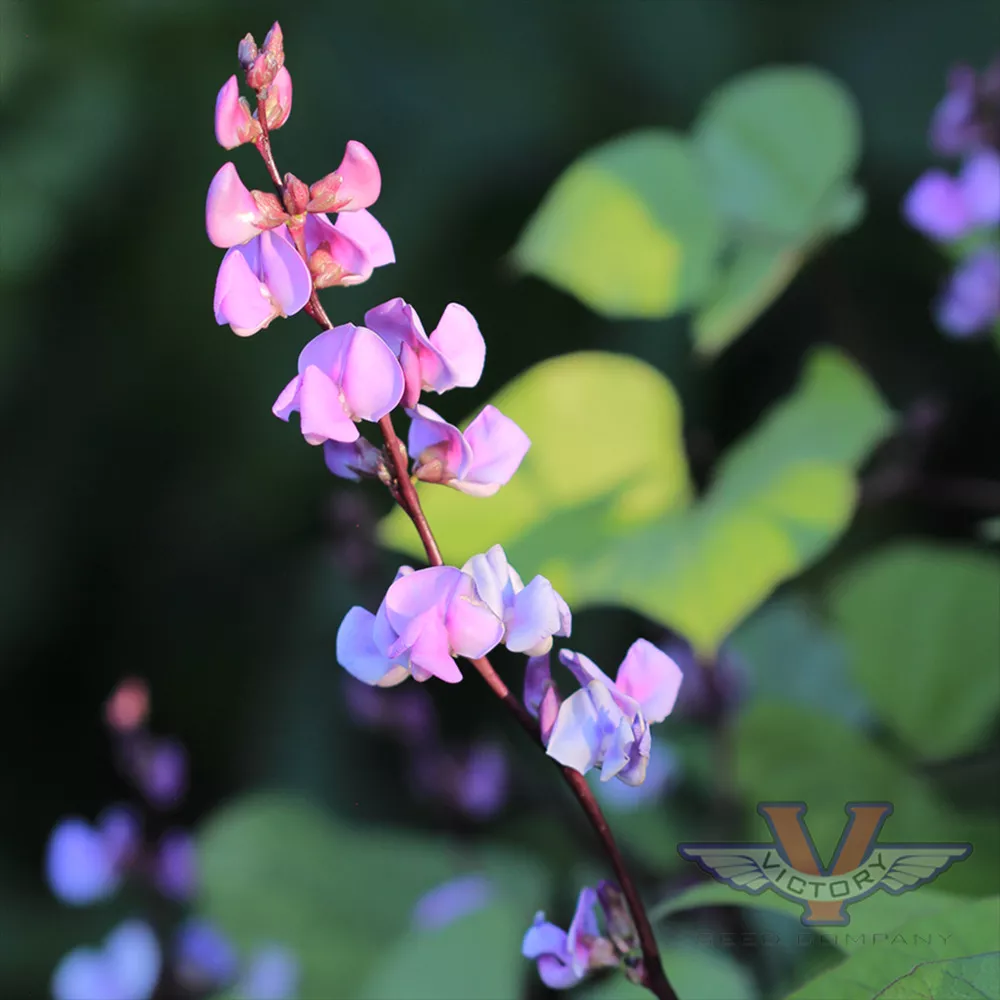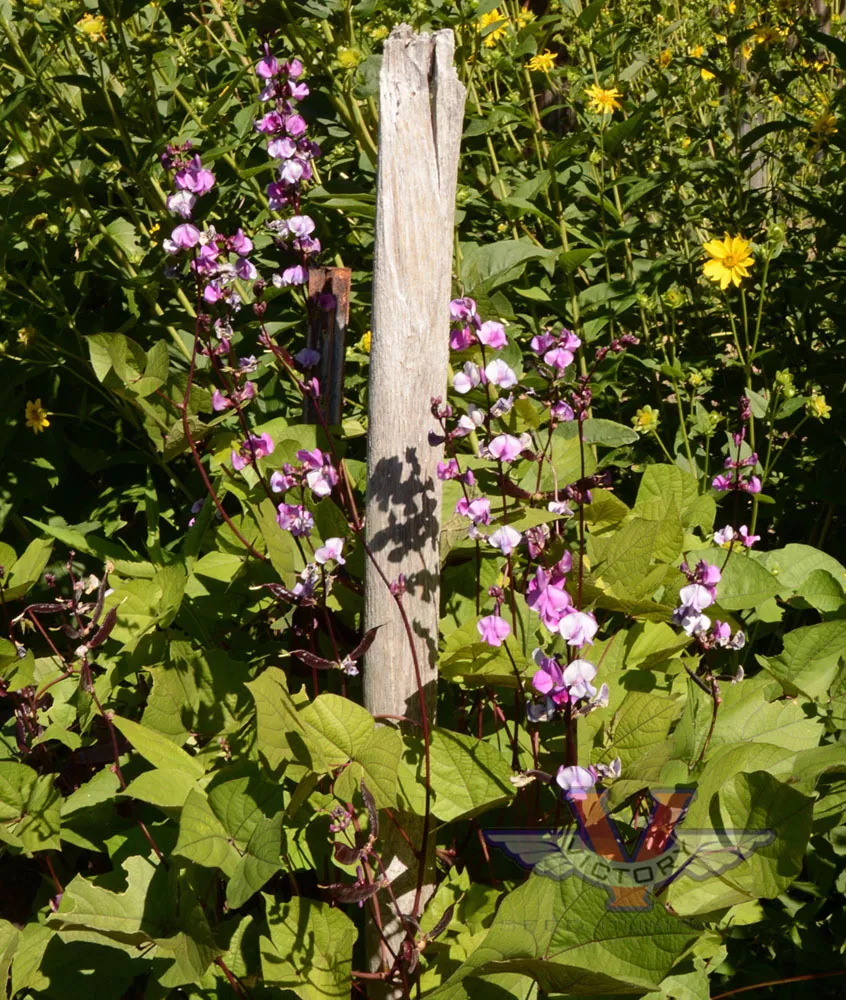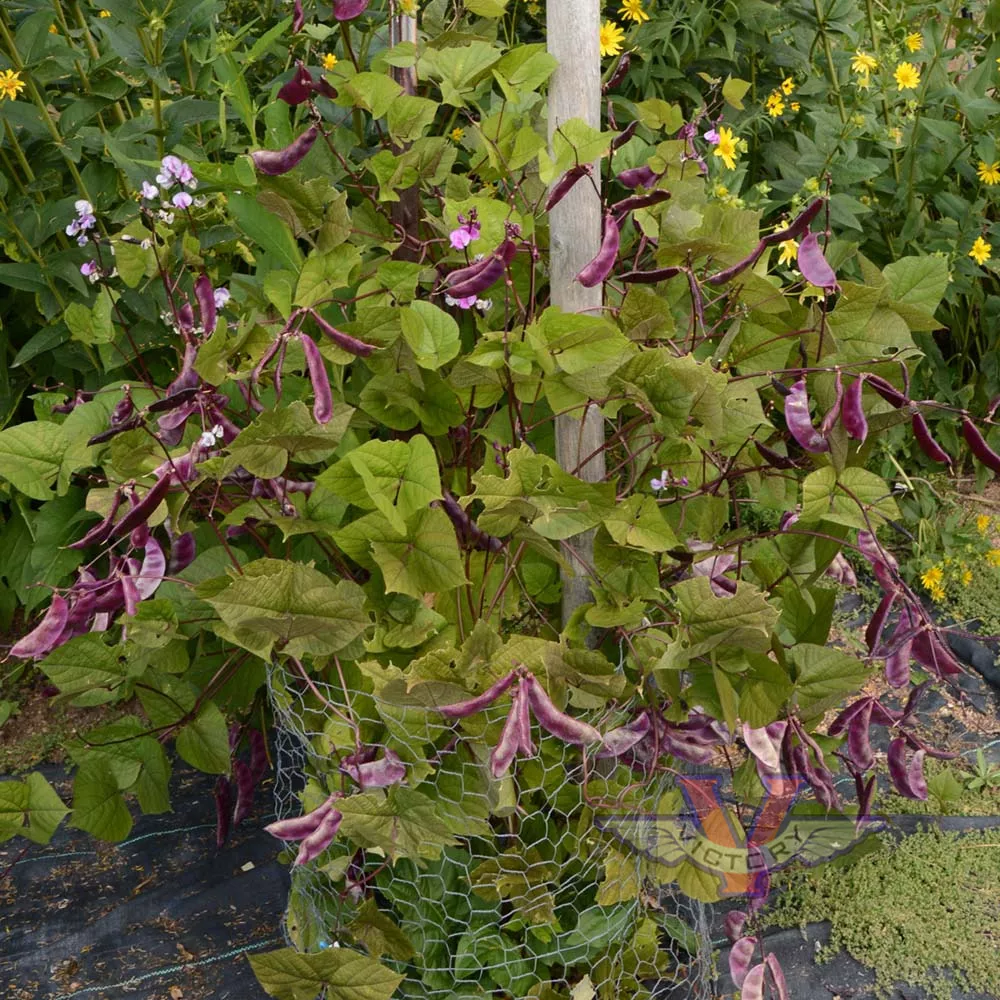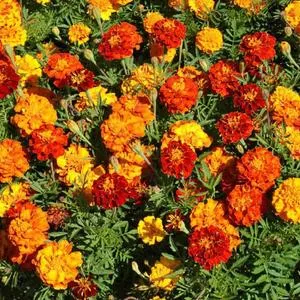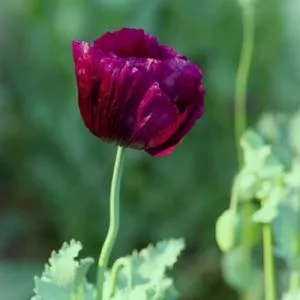


Hyacinth Bean, Purple
Lablab purpureus
Price: $3.71
SKU: 10007821Also known as bonavist-bean, and lablab-bean, this fast-growing heirloom vine is known for its multitudes of violet flower trusses and glossy purple pods. It was introduced into gardens from Egypt in 1818. Tolerates humid heat. It is a vigorous vining cousin to beans with attractive dark purple stained foliage. The generous clusters of blue and amethyst flowers resemble a delicate wisteria, producing abundantly from midsummer to the frosty days of autumn.
All parts of the plant are edible only after careful preparation, we recommend boiling the mature seeds twice before eating. This plant is best used as an ornamental vine.
This robust climber is a delightful addition to any vertical space in the garden. The plant is attractive long before the beautiful flowers appear from mid-summer to frost. Blooms give way to stunningly beautiful seed pods. Both blooms and seed pods are useful in floral design.
Hardy to Zone 9b, grown as an annual elsewhere.
Genetic Classification: Open Pollinated
Days to germination: 5-12
Plant Spacing: 12"
To start indoors, sow 4-6 weeks before your last frost date. Transplant outdoors once all danger of frost is over.
For ourdoor planting, direct sow in the ground after all danger of frost is over.
Plant Spacing: 12"
To start indoors, sow 4-6 weeks before your last frost date. Transplant outdoors once all danger of frost is over.
For ourdoor planting, direct sow in the ground after all danger of frost is over.
Customer Reviews:
Do you have experience with this one? 📝 📣 Write a review!
No reviews have been posted yet.

